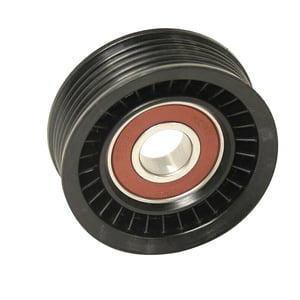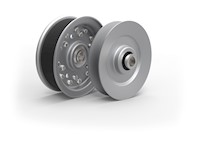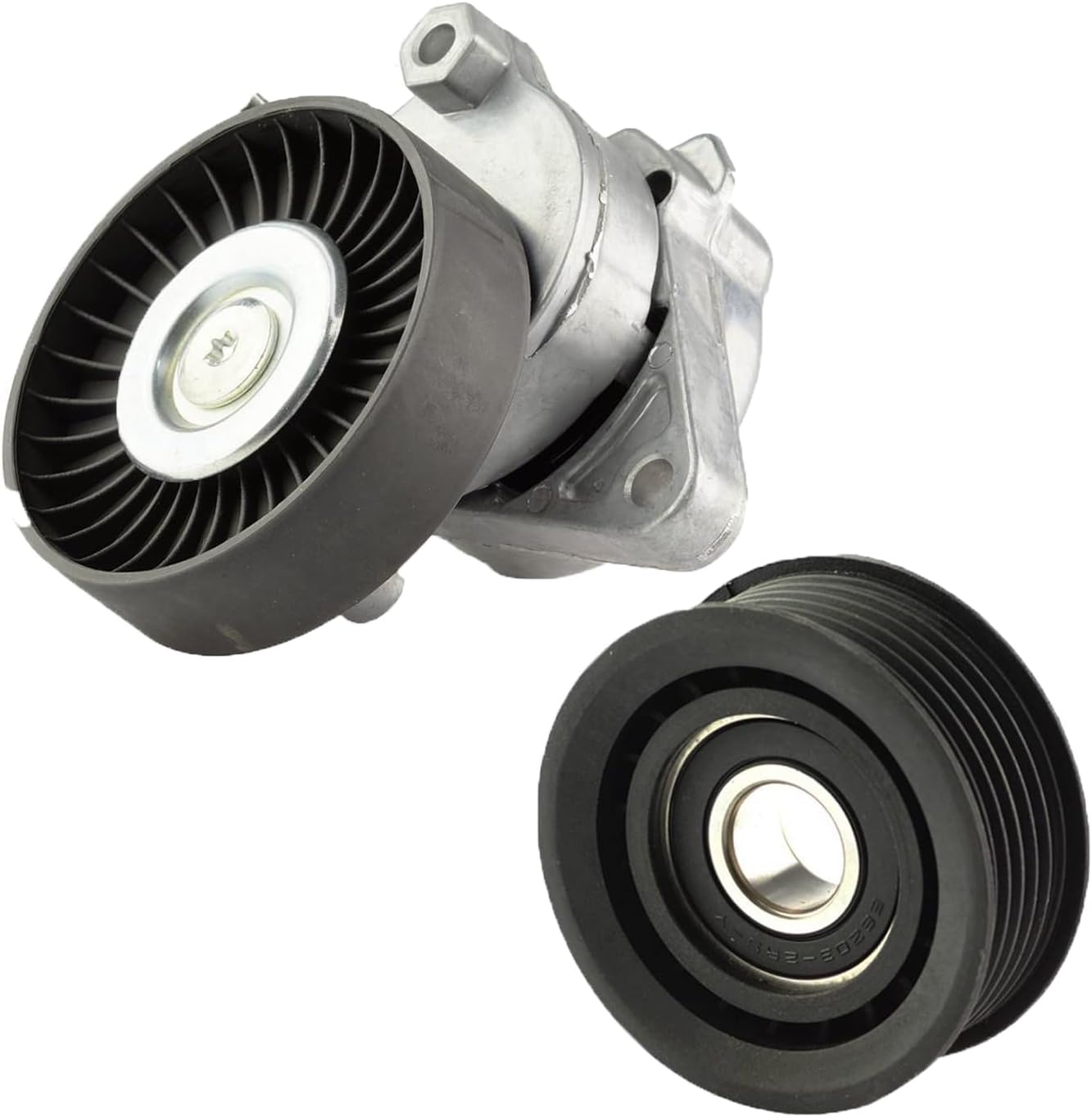Product Description
Head Drive Pulley, Return Pulley,Bend Pulley, Snub Pulley,Tensioning Pulley, Take up Pulley can be provided. We are designing and manufacturing pulleys, using materials of the highest quality in a production process employing advanced technology. This together with the application of the Quality Assurance system certifi ed to ISO 9001:2015, contributes to the production of high quality products offering dependable, long life performance in the field and appreciably reducing maintenance cost. Each our conveyor pulley is individually computer designed to meet the client’s requirements.
|
Product Name |
Belt Conveyor Pulley Drum |
||
|
Type |
Drive Pulley, Bend Pulley,Snub Pulley,Take Up Pulley | ||
|
Length |
200mm-2500mm |
||
|
Materials |
Carbon steel, Stainless steel, Rubber |
||
|
Surface Treatment |
Smooth, CHINAMFG grooved lagging, Herringbone lagging, Ceramic lagging |
||
|
Welding |
Submerged Arc Welding |
||
|
Bearing |
Famous brands |
||
|
Structure |
Tube,shaft,self-aligning bearing,bearing seat/house,hub, locking bushing,end disc |
||
Drive Pulley Introduction:
1. Head/Drive Pulley is located at the discharge terminus of the conveyor.
2. Drive pulley provides the driving force for the conveyor. In order to increase pulley life and traction, it often has a larger diameter than other pulleys.
3. We can supply pulleys with hot vulcanized rubber lagging, plain or grooved, as required by client. Different patterns of grooving such as herringbone or CHINAMFG can be provided to increase tractive friction under dirty or wet conditions. CHINAMFG grooves have the advantage of being installed in any orientation, regardless of belt direction.
Specification of Drive Head Pulley Drum
| Belt Width | 500-2800mm (19-110 inch) |
| Pulley Length | 500-3500mm (19-138 inch) |
| Diameter | 200-1800mm (8-70 inch) |
| Standard | ISO9001:2008, CEMA, DIN, TUV, JIS, AS/NS, etc. |
| Working Life | More than 30,000 hours. |
| Surface | Flat Rubber Lagged, Ceramic Lagged, CHINAMFG Rubber Lagged, etc. |
| Main Material | Carbon Steel |
| Length of conveyor drive pulley depends on the width of conveyor Belt. You can get drive pulleys with hot & cold vulcanized rubber lagging, plain or grooved, as required by client. | |
Bend Pulley Introduction:
1. The bend pulley is used for changing the direction of the belt.
2. The bend pulley is usually installed at the tail part or the vertical take-up equipment part when the belt direction need to 180°bending. It will be installed above the take-up equipment part while 90°bending.
3. The pulley, which is used for extending the contact surface, is usually used for below or equal to 45 degree bending.
4. The surface treatment of the bend pulley can be smooth steel and flat rubber lagging.
Specification of Bend Pulley:
| Belt Width | 500-2800mm(19-110 inch) |
| Pulley Length | 500-3200mm(19-126 inch) |
| Diameter | 200-1800mm(8-70 inch) |
| Standard | ISO9001:2008, CEMA, DIN, TUV, etc. |
| Working Life | More than 30,000 hours. |
| Surface | Flat Rubber Lagged, Ceramic Lagged, CHINAMFG Rubber Lagged, etc. |
| Main Material | Carbon Steel |
| Length of conveyor bend pulley depends on the width of conveyor Belt. You can get drive pulleys with hot vulcanized rubber lagging, plain or grooved, as required by client. | |
Snub Pulley
Snub pulley is used to achieve higher angle of wrap on the drive pulley thereby increasing the traction. It also reduces the belt tension maximizing the life of the conveyor component.It is mounted close to the drive pulley on the return side of the belt.
Specification of Snub Pulley:
| Items | Content |
| Belt Width | 500-2800mm (19-110 inch) |
| Pulley Length | 500-3200mm (19-126 inch) |
| Diameter | 200-1800mm (8-70 inch) |
| Standard | ISO9001:2008, CEMA, DIN, TUV, etc. |
| Working Life | More than 30,000 hours. |
| Surface | Flat Rubber Lagged, Ceramic Lagged, CHINAMFG Rubber Lagged, etc. |
| Main Material | Carbon Steel |
| Length of conveyor Snubpulley depends on the width of conveyor Belt. You can get Snubpulleys with hot vulcanized rubber lagging, plain or grooved, as required by client. | |
Take Up Pulley
The take up pulley will ensure adequate tension of the belt leaving the drive pulley so as to avoid any slippage of the belt, ensure proper belt tension at the loading and other points along the conveyor, compensate for changes in belt length due to elongation, and provide extra length of belt when necessary for splicing purpose.
Specification of take up pulley drum:
| Belt Width | 500-2800mm(19-110 inch) |
| Pulley Length | 500-3200mm(19-126 inch) |
| Diameter | 200-1800mm(8-70 inch) |
| Standard | ISO9001:2008, CEMA, DIN, TUV, etc. |
| Working Life | More than 30,000 hours. |
| Surface | Flat Rubber Lagged, Ceramic Lagged, CHINAMFG Rubber Lagged, etc. |
| Main Material | Carbon Steel |
The components of a pulley drum include the following:
| Drum or Shell | The drum is the portion of the pulley in direct contact with the belt. The shell is fabricated from either a rolled sheet of steel or from hollow steel tubing.The shell has a specific ‘face’ width and diameter which is determined by the width of the belting and the type and rating of the belt to be used on the conveyor. | |
| Diaphragm Plates | The diaphragm or end plates of a pulley are circular discs which are fabricated from thick steel plate and which are welded into the shell at each end, to strengthen the drum.The end plates are bored in their centre to accommodate the pulley shaft and the hubs for the pulley locking elements. | |
| Shaft | The shaft is designed to accommodate all the applied forces from the belt and / or the drive unit, with minimum deflection.The shaft is located and locked to the hubs of the end discs by means of a locking elements. The shaft is supported on both ends by bearings which are housed in plummer blocks, to support the shaft and pulley assembly on the conveyor structure. Shafts often comprise different diameters along their length due to the bending moments and resultant deflection limitations. The diameter of the shaft at the landings for the bearings may be smaller to satisfy the necessary bearing diameter which is more cost-effective (smaller). Similarly in the case of a drive shaft, the drive attachment, may be different to the other diameters along the shaft and hence pulley shafts are often stepped. |
|
| Locking Elements | These are high-precision manufactured items which are fitted over the shaft and into the pulley hubs. The locking elements attach the pulley firmly to the shaft via the end plates.Locking elements work on the friction-grip principle whereby the element is able to be fastened to the shaft and hub simultaneously and concentrically, by tightening a series of screws around the locking element. | |
| Hubs | The hubs are fabricated and machined housings which are welded into the end plates. The hubs are sized according to the size of the pulley, the diameter of the shaft and the size of the locking element which is required for the specific duty. | |
| Lagging | It is sometimes necessary or desirable to improve the friction between the conveyor belt and the pulley in order to improve the torque that can be transmitted through a drive pulley.Improved traction over a pulley also assists with the training of the belt. In such cases pulley drum surfaces are ‘lagged’ or covered in a rubberized material. This cover is usually 8 mm to 12 mm thick and can be plain or have a grooved pattern. The rubber lagging is vulcanized to the pulley shell to ensure that it remains attached under adverse operating conditions. |
|
| Bearing Assemblies | Bearings support the rotating shaft and hence the pulley. The bearings are housed in ‘plummer blocks’ which enable the mass of the pulley assembly plus the belt tension forces to be transmitted to the pulley supporting structure.Plummer blocks are often bolted to ‘sole plates’ which are welded to the structure. The sole plates incorporate jacking screws to enable the pulley to be correctly and relatively easily aligned. |
|
Several types of bearing housing, seals and end disc:
Pulley Drum Warehouse and package:
Pulley Drums:
Our Products: Belt Conveyors, Pulley Drum, Conveyor Rollers Idler, etc.
/* January 22, 2571 19:08:37 */!function(){function s(e,r){var a,o={};try{e&&e.split(“,”).forEach(function(e,t){e&&(a=e.match(/(.*?):(.*)$/))&&1
| Material: | Stainless Steel |
|---|---|
| Surface Treatment: | Polishing |
| Motor Type: | Frequency Control Motor |
| Samples: |
US$ 300/Piece
1 Piece(Min.Order) | Order Sample |
|---|
| Customization: |
Available
| Customized Request |
|---|
.shipping-cost-tm .tm-status-off{background: none;padding:0;color: #1470cc}
|
Shipping Cost:
Estimated freight per unit. |
about shipping cost and estimated delivery time. |
|---|
| Payment Method: |
|
|---|---|
|
Initial Payment Full Payment |
| Currency: | US$ |
|---|
| Return&refunds: | You can apply for a refund up to 30 days after receipt of the products. |
|---|

What safety considerations should be kept in mind when working with idler pulleys?
Working with idler pulleys requires adherence to proper safety practices to prevent accidents and injuries. Here are some important safety considerations to keep in mind:
1. Lockout/Tagout Procedures:
Prior to any maintenance or repair work involving idler pulleys, follow lockout/tagout procedures to isolate the power source and ensure the equipment is de-energized. This prevents unexpected startup and potential entanglement hazards.
2. Personal Protective Equipment (PPE):
Wear appropriate personal protective equipment, such as safety glasses, gloves, and protective clothing, when working with idler pulleys. PPE helps protect against potential hazards such as flying debris, sharp edges, or accidental contact with rotating parts.
3. Training and Knowledge:
Ensure that personnel working with idler pulleys are trained and knowledgeable about the equipment and its safe operation. They should understand proper installation, maintenance, and adjustment procedures to minimize risks.
4. Equipment Inspection:
Regularly inspect idler pulleys for signs of wear, damage, or misalignment. Replace any worn or damaged pulleys promptly to ensure safe operation and prevent unexpected failures.
5. Proper Guarding:
Ensure that idler pulleys are properly guarded to prevent accidental contact. Install adequate barriers, covers, or shields to prevent fingers, clothing, or other objects from coming into contact with rotating pulleys.
6. Safe Work Practices:
Follow safe work practices when working with idler pulleys. Avoid wearing loose clothing or jewelry that could get caught in the pulleys. Use appropriate tools and techniques when installing or adjusting belts to minimize the risk of injury.
7. Risk Assessment:
Conduct a thorough risk assessment of the work area and the specific tasks involving idler pulleys. Identify potential hazards, such as pinch points, sharp edges, or inadequate lighting, and take appropriate measures to mitigate the risks.
8. Emergency Procedures:
Establish clear emergency procedures in the event of an accident or injury. Ensure that personnel know how to respond to incidents, provide first aid if necessary, and contact medical assistance.
It is important to note that the above safety considerations are general guidelines. Always refer to the specific safety guidelines and recommendations provided by the equipment manufacturer and follow any applicable regulations and standards in your region to ensure the highest level of safety when working with idler pulleys.

Are there different types of idler pulleys, and how do they vary in applications?
Yes, there are different types of idler pulleys that vary in design and application. Here’s a detailed explanation of the various types of idler pulleys and how they differ in their applications:
1. Flat Belt Idler Pulleys:
Flat belt idler pulleys have a flat surface and are commonly used in applications where flat belts are used for power transmission. They are typically used in industrial machinery, conveyor systems, and agricultural equipment. Flat belt idler pulleys come in various diameters and are designed to guide and support the flat belt, ensuring proper tension and alignment.
2. V-Belt Idler Pulleys:
V-belt idler pulleys are designed specifically for V-belt drives, which are widely used in automotive and industrial applications. These pulleys have a V-shaped groove that matches the cross-section of the V-belts, ensuring proper engagement and power transmission. V-belt idler pulleys are used in automotive engines, HVAC systems, and various industrial machinery.
3. Timing Belt Idler Pulleys:
Timing belt idler pulleys are used in applications where timing belts are employed for synchronous power transmission. These pulleys have specially designed teeth or grooves that mate with the teeth on the timing belt, allowing precise motion control and synchronization. Timing belt idler pulleys are commonly found in automotive engines, CNC machines, robotics, and other precision machinery.
4. Chain Idler Pulleys:
Chain idler pulleys are used in systems that utilize chains for power transmission. These pulleys have grooves or teeth that match the profile of the chain, providing proper engagement and tension. Chain idler pulleys are commonly employed in bicycles, motorcycles, industrial machinery, and conveyor systems using roller chains or timing chains.
5. Tensioner Pulleys:
Tensioner pulleys are a specialized type of idler pulleys designed specifically for maintaining proper tension in automotive accessory drive systems. They are often used in conjunction with serpentine belts or multi-ribbed belts. Tensioner pulleys incorporate a spring-loaded mechanism that automatically adjusts the tension of the belt. These pulleys are critical for reliable operation and proper belt tension in automotive engines.
6. Specialty Idler Pulleys:
In addition to the commonly used idler pulleys mentioned above, there are various specialty idler pulleys designed for specific applications. These may include idler pulleys with unique shapes, sizes, or specialized features to meet the requirements of specific industries or equipment. Specialty idler pulleys can be found in applications such as printing presses, textile machinery, packaging equipment, and more.
The choice of idler pulley type depends on the specific application requirements, such as the type of belt or chain used, power transmission needs, space constraints, and environmental factors. Proper selection of the appropriate idler pulley ensures optimal performance, reliable power transmission, and extended system lifespan.

How does the size and diameter of an idler pulley affect its performance?
The size and diameter of an idler pulley play a significant role in determining its performance characteristics. Here’s a detailed explanation of how the size and diameter of an idler pulley affect its performance:
1. Tension and Belt Engagement:
The size and diameter of an idler pulley impact the tension and engagement of the belt. A larger idler pulley will create more belt wrap around its circumference, resulting in increased belt contact and improved grip. This helps to maintain proper tension in the belt and prevent slippage, especially in high-torque applications. Conversely, a smaller idler pulley may have less belt wrap, leading to reduced grip and potentially lower tension.
2. Belt Speed:
The size and diameter of an idler pulley affect the speed at which the belt travels. A larger idler pulley will cover a greater distance per revolution, resulting in a higher belt speed. This can be advantageous in applications where increased speed is desired. Conversely, a smaller idler pulley will cover a shorter distance per revolution, leading to a slower belt speed.
3. Belt Flexibility:
The size and diameter of an idler pulley impact the flexibility of the belt. A larger idler pulley allows for a larger bend radius, reducing the stress on the belt and improving its durability. It also minimizes the risk of excessive bending or flexing that could lead to premature wear or failure. In contrast, a smaller idler pulley may require the belt to bend more sharply, potentially increasing the risk of damage or wear.
4. System Clearance:
The size and diameter of an idler pulley affect the overall clearance in the mechanical system. In tight spaces or constrained environments, a smaller idler pulley may be preferred, as it requires less clearance. Conversely, a larger idler pulley may require additional space to accommodate its size.
5. Load Distribution:
The size and diameter of an idler pulley impact its ability to distribute the load across the belt. A larger idler pulley can distribute the load over a larger surface area, reducing the stress on the belt and other components. It helps to minimize wear and prolong the life of the system. On the other hand, a smaller idler pulley concentrates the load on a smaller area, potentially increasing the risk of localized wear or failure.
6. Bearing Life and Friction:
The size and diameter of an idler pulley influence the bearing life and friction within the system. Larger idler pulleys typically have larger bearings, which can handle higher loads and exhibit improved durability. They also tend to generate lower friction, leading to reduced heat and wear. In contrast, smaller idler pulleys may have smaller bearings that may have limitations in terms of load capacity and friction.
It’s important to note that the specific requirements for size and diameter of an idler pulley will depend on the application and the intended function within the mechanical system. Factors such as belt type, load requirements, speed, and space constraints should be considered when selecting the appropriate size and diameter of an idler pulley for optimal performance.


editor by CX
2024-04-10